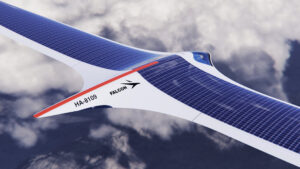Solar powered aviation has come a long way since the first solar powered airplane, Sunrise 1 took off from Camp Irwin, California in November 1974.
Reminiscent of the Wright Brother’s prototypes, the flight lasted just 20 minutes and flew at an altitude of 100m, although unlike the intrepid Wright Bros, the flight was pilotless.
Despite the short distance and low altitude, the flight demonstrated for the first time, that an airplane could fly on solar power alone.
An improved version, Sunrise II was introduced, but after the aircraft became severely damaged in a failed test flight, the program was terminated.
The main feature that makes solar flight so attractive is an inexhaustible and clean energy source from our sun.
Solar powered aviation has developed over the decades with a series of key milestones and notable firsts, such as Solar Impulse 1, which became the first manned airplane to fly for 26 hours on nothing but solar power.
The upgraded Solar Impulse II became the first solar-powered piloted airplane to fly around the World, although it did take 16 months to complete the journey over various stages.
Some of the leading aerospace manufacturers also have their own solar flight programs designed for high altitude flight and for use in surveillance and telecoms too.
When can we expect the arrival of solar powered commercial airlines?
Solar-powered aircraft have experienced significant successes since that first flight back in 1974. But despite this, it is not yet seen as a realistic future means of mass commercial travel and as mentioned, their usage is currently restricted to communications and surveillance.
They are not only restricted in terms of payloads, but speeds are also much too slow to be deemed effective or efficient. (Solar Pulse II flew at an average speed of 42 mph), so there are many technological challenges ahe

ad if mass commercial use is to become a feasible proposition.
Despite being at concept stage, the distinctive Falcon Solar aircraft may give us a glimpse into what the future of solar-powered air-travel may look like. Its design is impressive with its expansive wings and fuselage covered in solar panels, to maximise and store the sun’s energy.
The Hungarian design team behind Falcon Solar have even considered how to harness lightning as a means of power when in clouds! Admittedly it sounds a bit terrifying, but we should admire the ambition, nevertheless.
Its’ good to stay aware of developments in this pioneering area, and it fits within the overarching debate about sustainable aviation and the drive to net zero. But the real magic happens when the various technologies combine and collaborate.
Could this give scope to a generation of sustainable aviation fuel (SAF) / solar-powered hybrid aircraft?

